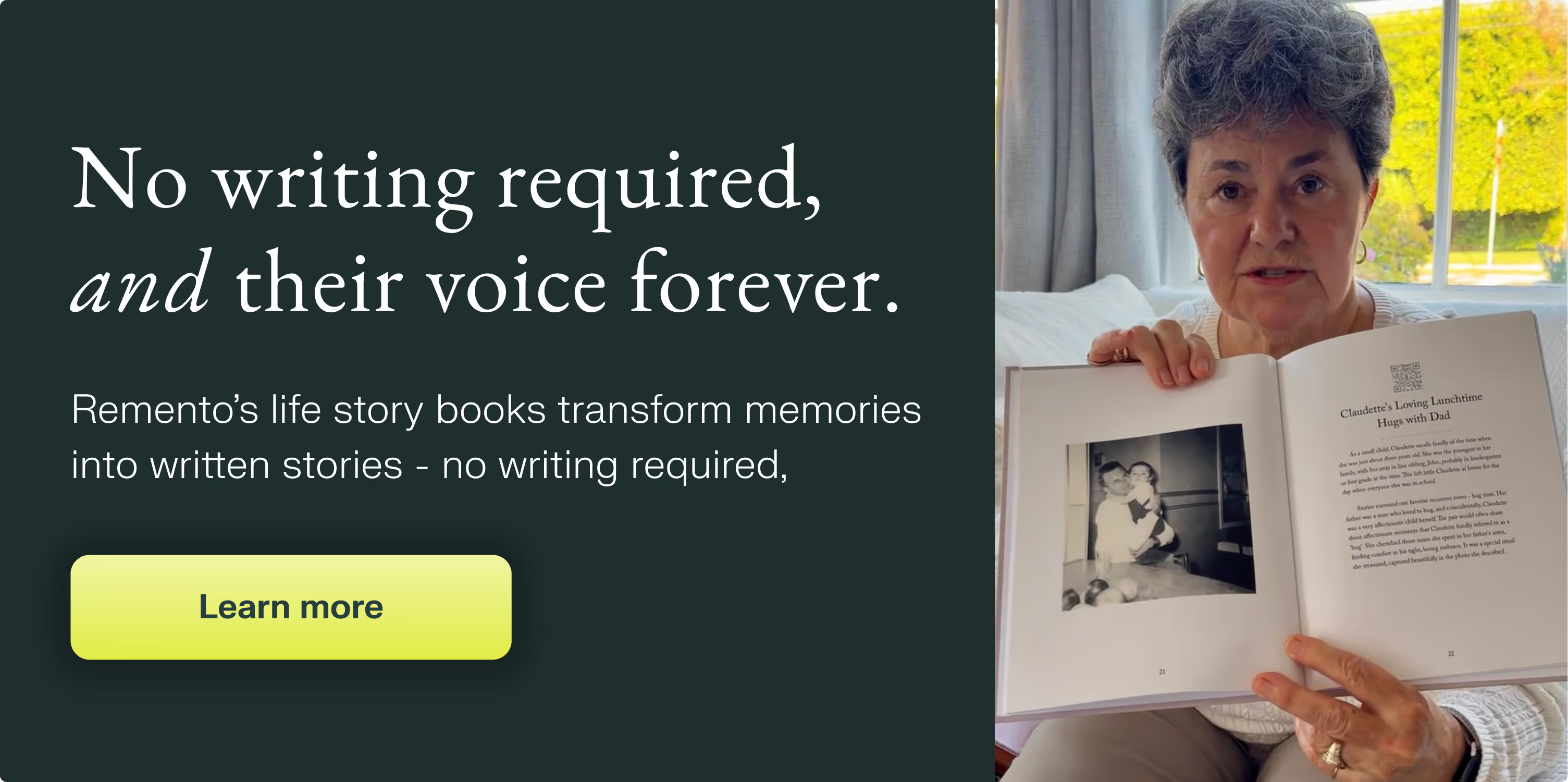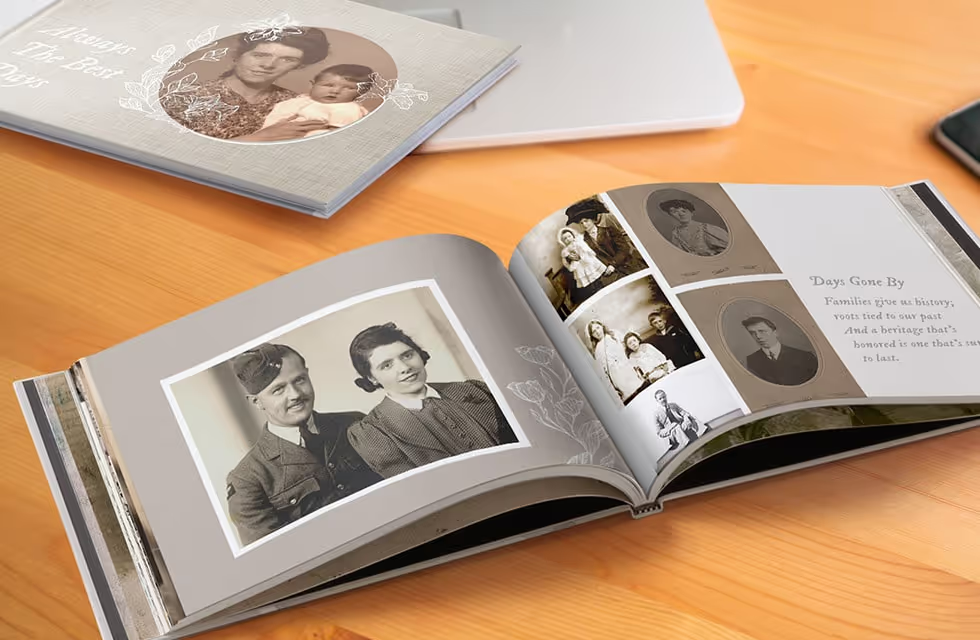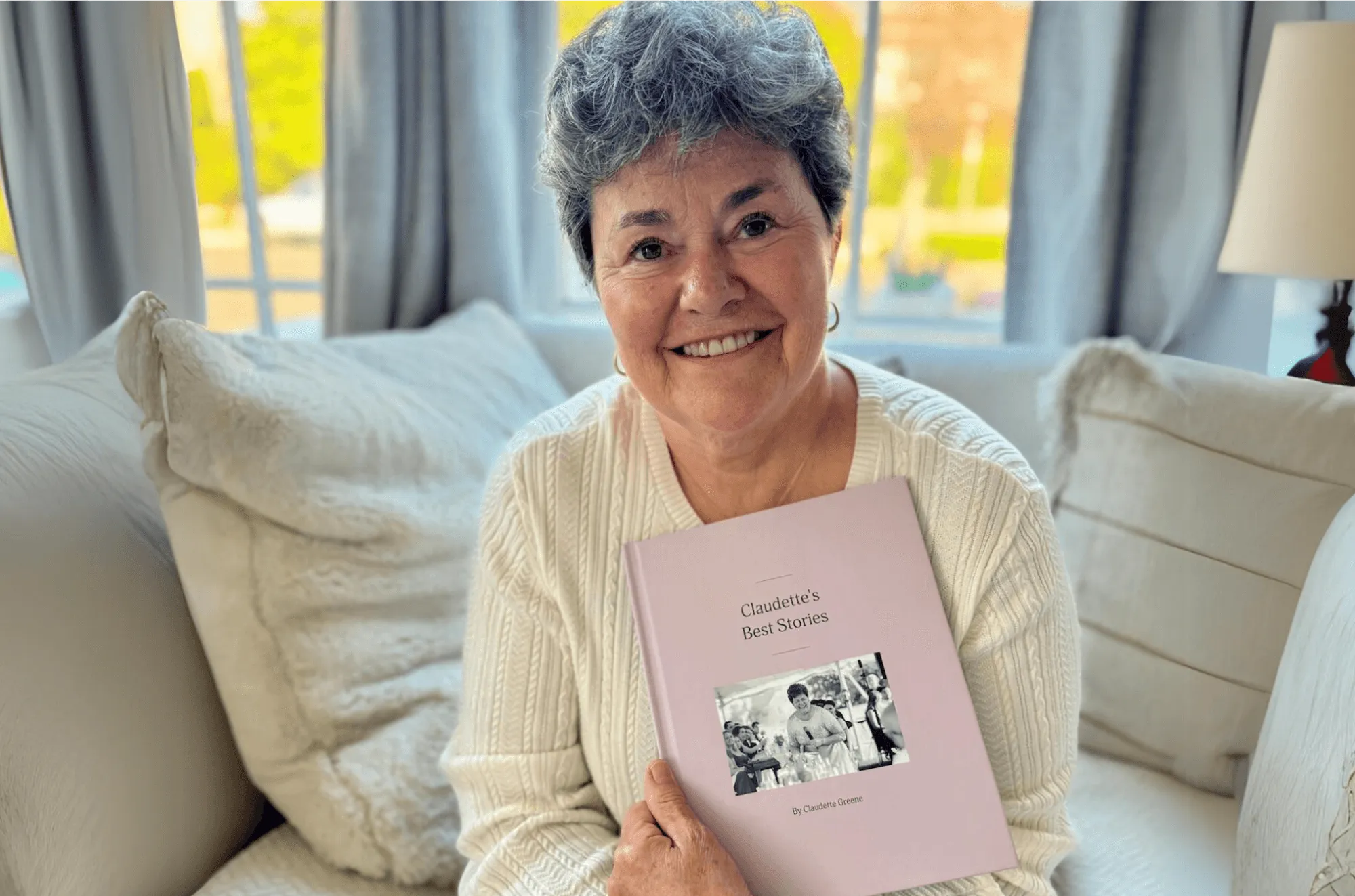Guaranteed to teach you things you never knew.
7 Outside The Box Ways to Capture Your Parent or Grandparent's Stories
Explore seven creative methods for preserving and sharing family stories, ensuring that your family’s legacy and connections endure across generations.
In an era where digital technology dominates our lives, there's something profoundly important about preserving the stories of our parents and grandparents. These narratives are the threads that weave together our family tapestry, connecting us to our roots and shaping our understanding of who we are. While the voice recorder on your phone is a handy tool, there are more engaging and meaningful ways to capture these precious memories. Let's explore seven innovative methods that not only preserve stories but also create lasting connections between generations.
The Importance of Preserving Family Stories
Before we dive into the methods, let's take a moment to reflect on why capturing family stories is so crucial. In our fast-paced digital world, the oral traditions that once passed down family histories are becoming increasingly rare. By actively preserving these stories, we're:
- Safeguarding our cultural heritage
- Strengthening intergenerational bonds
- Creating a sense of identity for younger family members
- Documenting personal and social history
- Providing valuable life lessons and perspectives for future generations
Now, let's explore seven ways to capture these irreplaceable stories, each offering unique benefits beyond a simple voice recording.

1. Embrace the Power of Video Storytelling
In today's visual world, video storytelling stands out as a powerful medium for capturing family histories. Unlike a simple audio recording, video captures facial expressions, gestures, and the environment, adding rich layers to the storytelling experience.
How to do it:
- Set up a comfortable, well-lit area for recording
- Use a good quality camera or smartphone
- Prepare open-ended questions to guide the conversation
- Encourage natural storytelling rather than a formal interview
- Include B-roll footage of family photos or meaningful objects
Pro tip: Consider creating a mini-documentary series, focusing on different themes or periods of your loved one's life in each episode.

The visual element of video allows future generations to not just hear, but see and feel the presence of their ancestors. It's a window into the past that brings stories to life in a way that audio alone simply can't match.

2. Utilize the Remento Book: A Revolutionary Approach to Family Storytelling
Remento takes a different approach to creating a life story book. Rather than require a storyteller to type their stories, Remento records a storyteller’s answers to prompts each week and transforms those recordings into written stories that they print into a hardcover book. Plus, their hardcover books are printed with QR codes that when scanned bring up the recording used to write each chapter. The Remento Book is ideal for those who prefer verbal storytelling and offers a multi-sensory legacy that future generations can see, read, and hear.
Key features of the Remento Book:
- Interviews storyteller once per week from any device
- Turns storyteller’s spoken answers into written stories
- Recordings shared with family instantly
- Books include QR codes that link to recordings
Pro tip: Use the photo prompt feature to uncover stories behind treasured family photographs, leading to rich, detailed narratives.

3. Create a Collaborative Family History Book
A family history book is a timeless keepsake that combines stories, photos, and even documents into a tangible legacy. Unlike a basic autobiography, a collaborative approach involves multiple family members, creating a richer, more diverse narrative.
How to do it:
- Choose a platform (digital or physical) for creating the book
- Assign different chapters or sections to family members
- Include a mix of written stories, transcribed interviews, and photos
- Add historical context to personal stories
- Consider professional design and printing for a polished final product
Pro tip: Use a service like Shutterfly or Mixbook to create a beautifully designed book that can be easily shared with family members.
A collaborative family history book not only preserves stories but also becomes a cherished family heirloom, passed down through generations.

4. Host a Family Story Circle
A family story circle is a group storytelling event that brings multiple generations together to share and record memories. This interactive approach not only captures stories but also strengthens family bonds and creates new shared experiences.
How to organize a family story circle:
- Choose a comfortable, quiet location
- Set a theme for each session (e.g., childhood memories, family traditions)
- Prepare prompts or questions to guide the conversation
- Use a high-quality audio or video recorder to capture the stories
- Encourage active listening and follow-up questions from participants
Pro tip: Make it a regular event, perhaps tied to family gatherings or holidays, to build a comprehensive family narrative over time.
The beauty of a family story circle lies in its ability to uncover unexpected connections and shared experiences across generations.

5. Leverage Digital Platforms: Voice Apps and Video Calls
While we're exploring options beyond the basic voice recorder, it's worth noting that digital platforms can still offer valuable ways to capture stories, especially when distance is a factor.
Using Your Phone's Voice App:
- Choose a quiet location with good acoustics
- Use an external microphone for better sound quality
- Prepare questions in advance to guide the conversation
- Save recordings in a cloud service for easy access and sharing
Recording Zoom Calls:
- Schedule regular video calls with your loved ones
- Use Zoom's built-in recording feature
- Engage in natural conversation, using prepared questions as guides
- Save and organize recordings for future reference
Pro tip: For Zoom calls, use the "Original Sound" setting to capture the best audio quality.
These digital methods are particularly useful for connecting with family members who live far away, ensuring that distance doesn't prevent the preservation of their stories.
6. Create a Family Podcast Series
Podcasting has exploded in popularity, and for good reason. It's an accessible, engaging medium that's perfect for storytelling. Creating a family podcast series is a fun and modern way to preserve stories while potentially sharing them with a wider audience.
Steps to start your family podcast:
- Choose a podcast hosting platform (e.g., Anchor, Libsyn)
- Invest in basic recording equipment (microphone, headphones)
- Plan your episode themes and structure
- Record and edit your episodes
- Share with family or publish publicly if desired
Pro tip: Involve younger family members in the technical aspects of podcasting to make it a true intergenerational project.
A family podcast not only preserves stories but also creates a unique bonding experience and a potential platform for sharing your family's history with the world.
7. Develop an Interactive Family Website or Blog
In our digital age, creating a family website or blog can be an engaging way to collect and share family stories. This format allows for ongoing additions and easy access for family members near and far.
Key elements of a family history website:
- A user-friendly platform (e.g., WordPress, Wix)
- Sections for different family branches or themes
- A mix of written stories, photos, and videos
- Interactive features like comments or a family forum
- Privacy settings to control access
How to make it successful:
- Assign different family members to manage various sections
- Regularly update with new stories and media
- Encourage interaction through comments and discussions
- Use it as a central hub for family news and events
Pro tip: Include a "Story of the Month" feature to keep engagement high and ensure regular updates.
A family website or blog serves as a living document of your family's history, accessible to all members regardless of their location.
Conclusion: Preserving Your Family's Legacy for Future Generations
As we've explored these seven innovative ways to capture family stories, it's clear that there are many options beyond the basic voice recorder on your phone. Each method offers unique benefits, from the visual richness of video storytelling to the interactive nature of a family story circle. The key is to find the approach (or combination of approaches) that resonates with your family and encourages active participation across generations.
Remember, the goal isn't just to record facts and dates, but to capture the essence of your family's experiences, values, and traditions. These stories are what connect us to our past and inform our future. They provide context for our lives, help us understand our place in the world, and offer valuable lessons and insights that can guide future generations.
Whether you choose to create a collaborative family history book, host regular story circles, or utilize cutting-edge technology like the Remento Book, the most important thing is to start. Don't wait for the perfect moment or method – begin capturing these stories now, while you still can.
Remember, every family has a unique story to tell, and each story is a precious gift to future generations. By taking the time to capture and preserve these narratives, you're not just recording history – you're creating a legacy.
So, which method speaks to you? Are you drawn to the technological innovation of the Remento Book, the collaborative nature of a family history website, or perhaps the intimacy of a family story circle? Whatever you choose, know that you're embarking on a meaningful journey that will be treasured for generations to come.

Their stories, forever at your fingertips
Remento’s life story books turn a parent or grandparent’s memories of the past into a keepsake book for the future - no writing required,.
Capture priceless family memories today
Join the thousands of families using Remento to preserve family history, all without writing a word.
.avif)
.avif)
